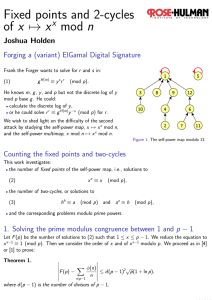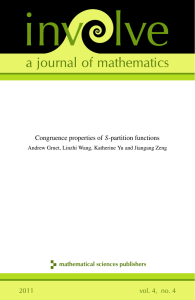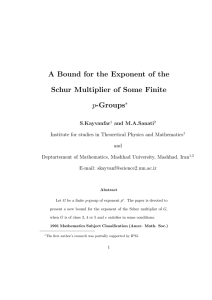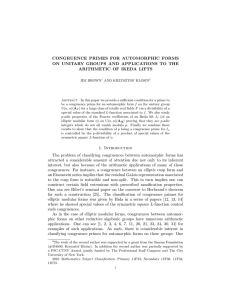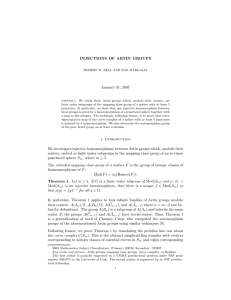Math 2200 Homework 5 Due Date: October 16
advertisement
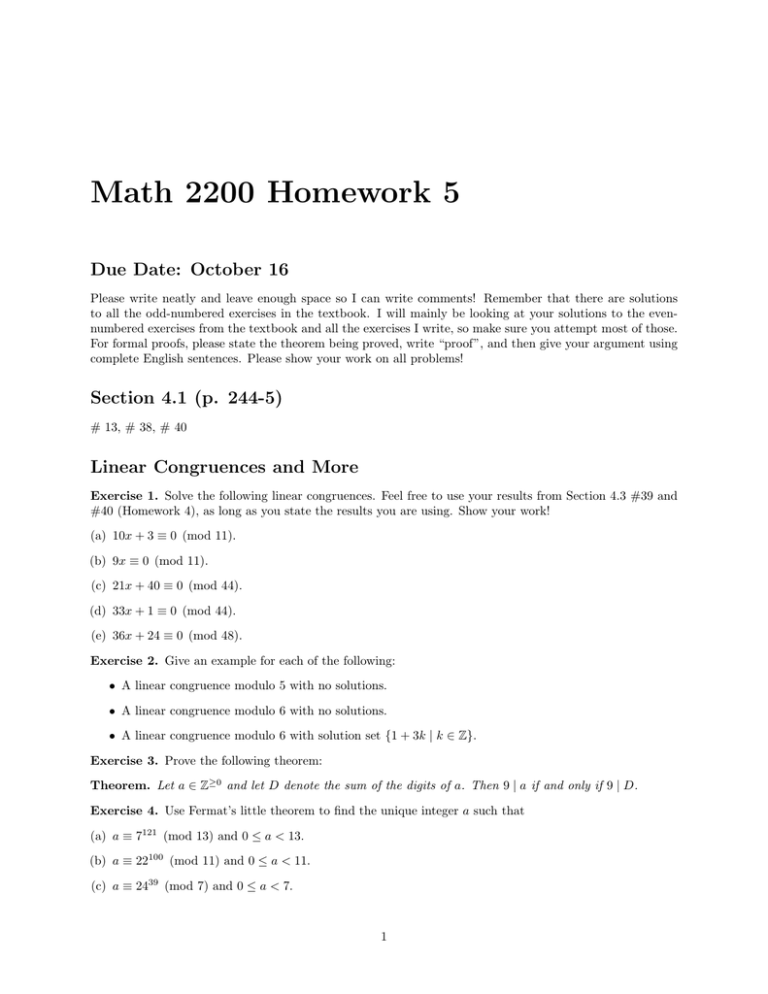
Math 2200 Homework 5
Due Date: October 16
Please write neatly and leave enough space so I can write comments! Remember that there are solutions
to all the odd-numbered exercises in the textbook. I will mainly be looking at your solutions to the evennumbered exercises from the textbook and all the exercises I write, so make sure you attempt most of those.
For formal proofs, please state the theorem being proved, write “proof”, and then give your argument using
complete English sentences. Please show your work on all problems!
Section 4.1 (p. 244-5)
# 13, # 38, # 40
Linear Congruences and More
Exercise 1. Solve the following linear congruences. Feel free to use your results from Section 4.3 #39 and
#40 (Homework 4), as long as you state the results you are using. Show your work!
(a) 10x + 3 ≡ 0 (mod 11).
(b) 9x ≡ 0 (mod 11).
(c) 21x + 40 ≡ 0 (mod 44).
(d) 33x + 1 ≡ 0 (mod 44).
(e) 36x + 24 ≡ 0 (mod 48).
Exercise 2. Give an example for each of the following:
• A linear congruence modulo 5 with no solutions.
• A linear congruence modulo 6 with no solutions.
• A linear congruence modulo 6 with solution set {1 + 3k | k ∈ Z}.
Exercise 3. Prove the following theorem:
Theorem. Let a ∈ Z≥0 and let D denote the sum of the digits of a. Then 9 | a if and only if 9 | D.
Exercise 4. Use Fermat’s little theorem to find the unique integer a such that
(a) a ≡ 7121 (mod 13) and 0 ≤ a < 13.
(b) a ≡ 22100 (mod 11) and 0 ≤ a < 11.
(c) a ≡ 2439 (mod 7) and 0 ≤ a < 7.
1
Optional Problems
! Come up with a criterion for when a positive integer is divisible by 11. Prove it!
! Try to prove Fermat’s little theorem: Section 4.4 #19.
! Read about the “Chinese Remainder Theorem” (p. 277-279).
2







